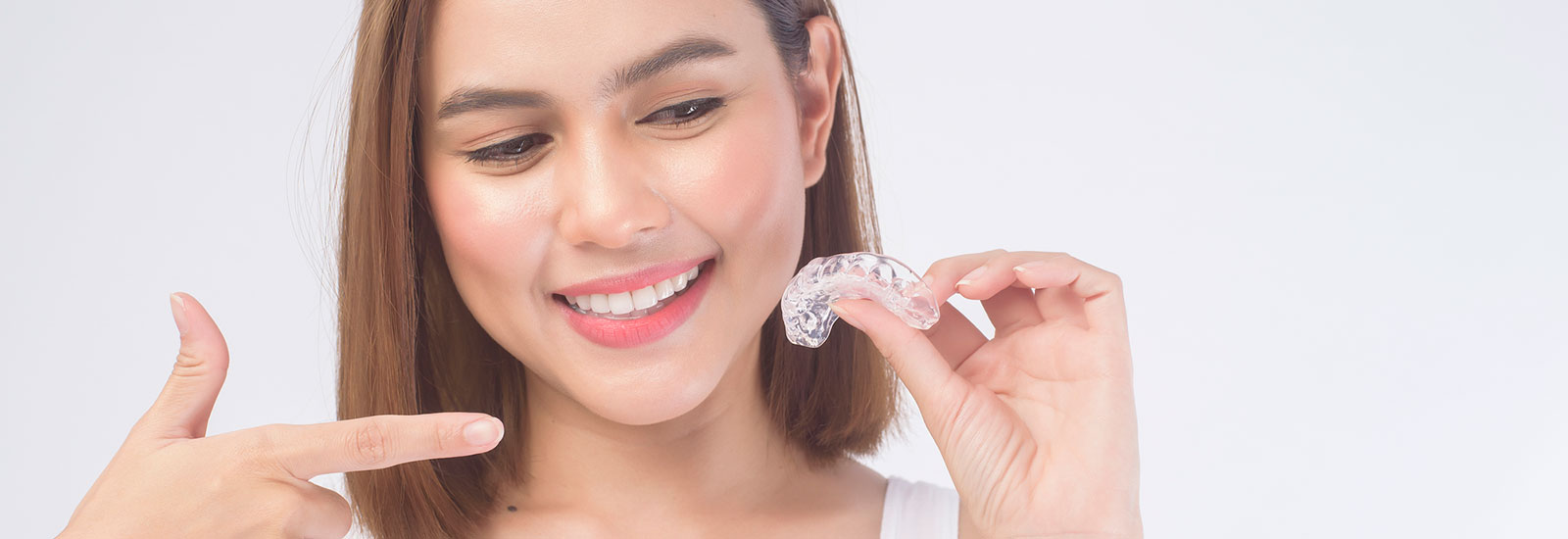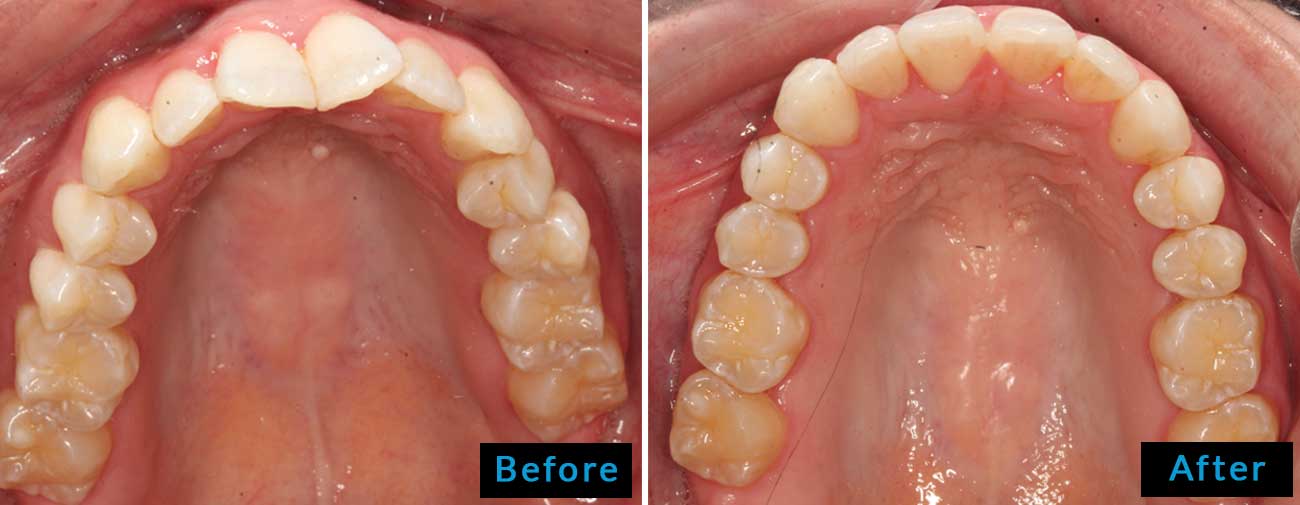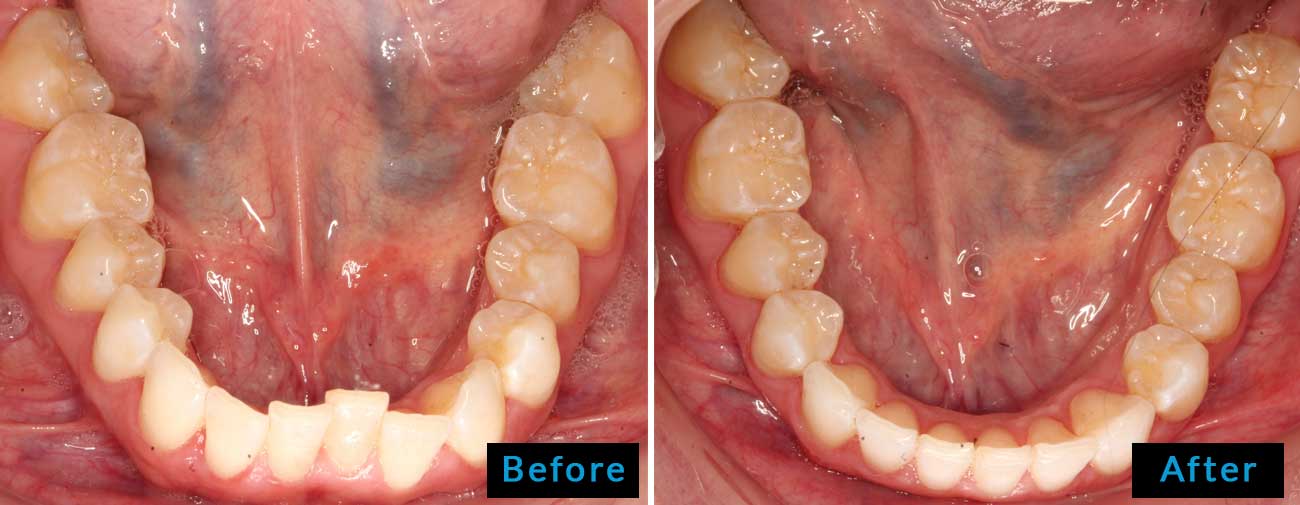Invisalign Treatment, Invisible Treatment with Visible Results
Patients who want to straighten their teeth no longer have to rely on traditional braces only. Clear aligners, also called “contact lenses for teeth,” are practical alternatives. Adults and teens alike love clear teeth aligners like Invisalign because the treatment is subtle, comfortable, and unlike braces it is easy to maintain a good oral hygiene during the course of treatment. Invisalign uses “repositioners” similar to whitening trays — these teeth aligners are removable and virtually invisible when worn.
Would you like to perfect your smile with Invisalign in Kanata, Ontario? Please reserve an appointment with The Hope Dental Care Centre.
How Invisalign works

Over the years, you have known that teeth are always straightened with wire-connected metal brackets. While this is true, advancements in orthodontics have led to the invention of the Invisalign — state-of-the-art teeth straightening system that uses clear braces to reposition your teeth. Many patients find Invisalign convenient because the aligners are removable and hardly noticeable to the average eye.
If you want to benefit from Invisalign, you must book a consultation with an Invisalign dentist like Dr. Far. We evaluate your dental health during your initial appointment to establish your candidacy for Invisalign. If eligible, we digitally scan your teeth and simulate your treatment plan to see how your teeth move into the desired position.
Next, we fabricate a series of aligners to be worn for at least 20-22 hours daily. You get a set of about 10-30 aligners, depending on the amount of work involved and each set is worn for about 7-10 days before moving to the next. This pattern continues until you achieve the intended results. After completing your treatment, we will give you a retainer to prevent your teeth from shifting back to their old position.
Benefits of Invisalign
Since its invention, Invisalign has been a breath of fresh air in orthodontics. This teeth straightening system offers numerous benefits, including.
- Invisalign treatment is discreet
- Clear teeth aligners are comfortable on your cheeks and gums
- No dietary restrictions
- It doesn’t interfere with how you clean your teeth
Want to find out more about Invisalign? Wondering whether you are a suitable candidate for Invisalign? Please partner with The Hope Dental Care Centre for all your Invisalign solutions. To get started, please dial (343) 803-6333 to get in touch with our dental team.
Invisalign FAQs
Would you like to straighten your smile with Invisalign? We know you have some questions before plunging into the treatment. The Hope Dental Care Centre in Kanata, Ontario, has prepared answers to the commonly asked questions about Invisalign.
Conventional braces use metal wires and brackets to apply controlled pressure on the teeth to achieve optimal alignment. In contrast, Invisalign uses a series of transparent, removable trays to align your teeth and bite.
Instead of metal, Invisalign aligners are created from a patented thermoplastic called SmartTrack®.This material is BPA-free, smooth, and flexible for maximum comfort.
The treatment starts with a consultation with an Invisalign-certified dentist. During this consultation, we’ll take digital scans of your mouth to create a simulated treatment plan using Invisalign software. This technology can predict when and how each tooth will move to perfection at each treatment stage.
Your treatment involves using several custom-fitted aligners, usually 18-30. Each aligner set is worn for approximately two weeks before progressing to the subsequent set. This sequence continues until you achieve the desired treatment goals.
When Invisalign was invented in the late 1990s, it was used to correct mild orthodontic issues and teeth that had relapsed after using braces. Today, Invisalign has undergone tremendous advancements and can resolve problems similar to traditional braces.
Invisalign can correct misaligned, overcrowded, and gapped teeth. Additionally, it can also address bite issues (malocclusion) like overbites, crossbites, and underbites.
Many teenagers and adults love Invisalign because of its discreetness. Invisalign aligners are thin, clear, and perfectly fitting, offering a nearly invisible treatment.
The other benefits of Invisalign include:
- Fast
- Comfortable
- No dietary restrictions
- Undisrupted oral hygiene
- Fewer dental visits
- No metal allergy
Although your doctor will determine the specific cost of your Invisalign treatment, the average cost is between $3,000 and $5,000, although some cases can cost up to $6,500. Your treatment cost varies because of the case’s complexity, compliance with usage, and your dentist’s experience.
Invisalign is designed to bring minimal disruptions to your everyday life. Since Invisalign aligners are removable, you can eat and clean your teeth normally. Besides, you can remove the aligners during important events, such as a corporate dinner or photo session.
Compared to traditional braces, Invisalign is generally considered to be less painful. Many patients experience mild pain and tenderness in the first few days as the teeth adjust to aligners. After the adjustment period, expect a comfortable experience.
Typically, Invisalign treatment takes 12-18 months, although milder cases can take as few as six months! After treatment, we’ll give you a retainer to keep your hard-won results intact.
Want to learn more about Invisalign? Please call (343) 803-6333 to talk to our team.






